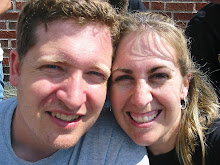Finally. I finally have some preliminary results. After 3 months of chasing this down, I have 190 µl of DNA at a concentration of about 15 ng/µl. Whew! Now the hard work of going from an easy to grow cell line to finicky primary cells that we only get about once every two weeks or so. There are so many ways this can go wrong. The experiment takes about three days to go from living cells to purified DNA in a tube. One poorly aimed sneeze and I have to start over. Sometimes I am amazed that science ever moves forward at all.
What worries me about this experiment is that I will be successful in pulling down DNA that is bound to p75 but we won't be able to align it to the human genome. In other words, I will have done a lot of work for no results. A part of this worry stems from the fact that this is essentially an in Vivo test tube experiment. The cells I am currently using bear little resemblence to the real thing. Once a cell has been immortalized, it's genome is frequently messed up. This could mean that any results we obtain do not accurately reflect the interactions in a normal cell. We will be getting around this by using cells that we harvest directly from human patients. However, that only solves one issue. The other issue is the p75 DNA construct I am using. I have modified the original gene by cleaving off the part that normally is in the extracellular space (the ligand binding domain) and tagged it with two different DNA sequences. One tag is for identification purposes and the other is the NLS tag which forces p75 to translocate into the nucleus. This is a rather contrived system. We know that in a normal tumor cell (and I use that term loosely), p75 is a single pass, transmembrane receptor. Once it binds it's ligand, the intracellular part is cleaved and is translocated into the nucleus. My construct skips the ligand binding and normal intracellular trafficking. However, what if the normal trafficking mechanism is necessary for proper DNA binding? What if p75 is associating with another protein as it is being shuttled into the nucleus and it is that protein that is binding to the DNA and p75 is simply acting as a co-factor? Maybe p75 is not associating with another protein but what if it is being modified in some way while in the translocation process thereby allowing it to bind DNA with greater fidelity or greater promiscuity? If the translocation process is important in p75-DNA binding dynamics, I won't know that with my construct.
These are the things I think about as I am trying to fall asleep at night. At least they are entertaining and intellectually provoking.
Thursday, May 12, 2011
Subscribe to:
Posts (Atom)
